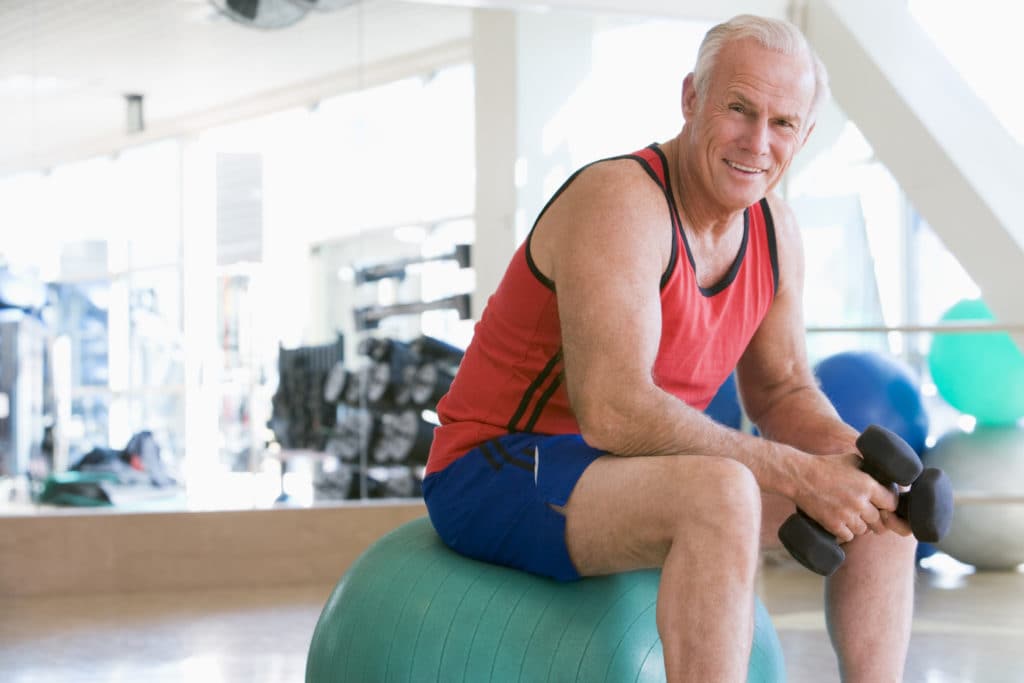Prevent prostate cancer with exercise
With nearly 900,000 new diagnoses each year globally, it is important to know how to prevent prostate cancer.
Prostate cancer develops when abnormal cells in the prostate gland grow more quickly than in a normal prostate and form a malignant tumor.
According to the Prostate Cancer Australia Guidelines, prostate cancer is the third most common cancer diagnosed in Australia and the third most common cause of cancer death.
One in five men will be diagnosed with prostate cancer by the age of 85 years. It is more common in older men, with 63% of cases diagnosed in men over 65 years of age. In 2013, 19,233 new cases of prostate cancer were diagnosed in Australia.
By 2030, experts expect that 1.7 million men will be engrossed in their own battle with prostate cancer.
If you have previously battled the disease, note that men who engage in regular exercise before, during and after treatment significantly diminish their risk of dying a prostate-cancer related death.
Regardless of cancer or fitness history, all men can prevent prostate cancer, or at least reduce their risk, by engaging in regular exercise.
An extensive study conducted by the Harvard School of Public Health found men who spend more than 90 minutes per week exercising at a brisk pace experience a 46% reduction in their risk of dying from the disease.
That fact alone is worth the cost of a gym membership, or at least a new pair of sneakers.
The study, which examined the exercise habits of 2,000 individuals over the course of 18 years, found the benefits of exercise tend to increase with duration and intensity.
Men who exercised vigorously for more than 3 hours per week experienced the greatest protective benefits – a 61% reduction in risk for prostate-cancer related death.
Vigorous exercises are those that tax the cardiovascular system. Although we often consider stress in a negative connotation, the physiological stress of exercise actually works to benefit the heart.
By forcing the cardiac muscle to work at a higher percentage of its maximum rate, you increase oxygen delivery to hardworking muscles, clear exercise byproducts, and improve circulation and cardiovascular endurance.
Getting started
If you’ve been inactive for some time, you should begin by incorporating short periods of physical activity into your daily routine. By gradually increasing an activity’s duration and intensity, your body has the chance to adapt without the risk of injury.
Experiment with a variety of activities to identify those that appeal to you the most: you’ll be more successful in committing to an exercise routine if it consists of activities that you find inherently rewarding.
Exercise doesn’t need to take place in a formal “gym” setting, either, can take place outdoors, at home, or in studio settings.
Group sports or activities are often more enjoyable than exercising alone, and many men enjoy the thrill of a competitive or recreational sports league.
If you have any concerns about your current health condition, consult your physician before attempting any new activity or exercise regime.
Some traditional and non-traditional exercise options include:
- Walking, jogging and running alone or with a group
- Bicycle riding along or with others
- Dancing
- Swimming or swim classes – Swimming and water aerobics provide a low-impact cardiovascular workout that can be especially beneficial for new exercisers or those with joint/mobility issues
- Group fitness classes
- Recreational sport activities (basketball, tennis, etc)
- Hiking
- Inline Skating
- Rowing
- Martial Arts
- Weight Lifting
As your endurance and fitness increase, add duration and intensity to reap the full preventative benefits of your exercise routine.
References
- “ACSM | Articles.” ACSM | Articles. N.p., n.d. Web. 12 Jan. 2013.
- Hendrick, Bill. “Exercise Cuts Prostate Cancer Death Risk.” WebMD. WebMD, n.d. Web. 13 Jan. 2013.
- Prostate Cancer Australia Guidelines: http://www.cancer.org.au/
- “Science Shows How Exercise Might Help in Prostate Cancer.” US News. U.S.News & World Report, 01 Feb. 2012. Web. 13 Jan. 2013.
- “Study Shows Regular Exercise Benefits Prostate Cancer Survivors.” Study Shows Regular Exercise Benefits Prostate Cancer Survivors. N.p., n.d. Web. 13 Jan. 2013.
Last Reviewed: 29-Mar-2017
Editor
Latest posts by Editor (see all)
- Oily fish and diabetes prevention - 04/06/20
- Manage the andropause - 11/12/17
- Testing testosterone levels - 07/12/17
